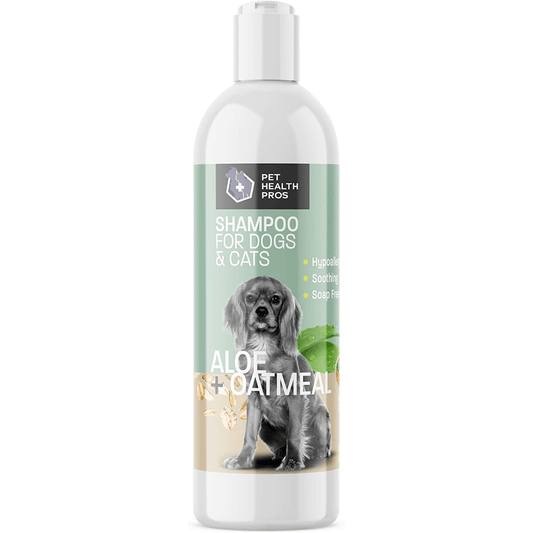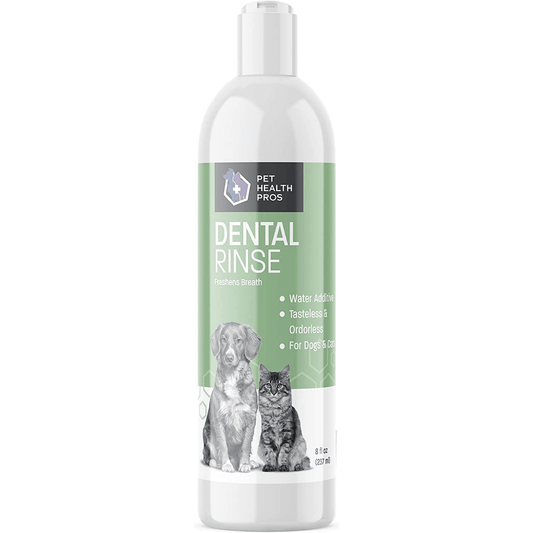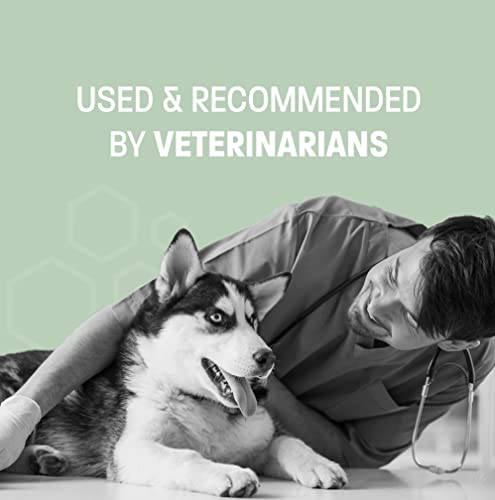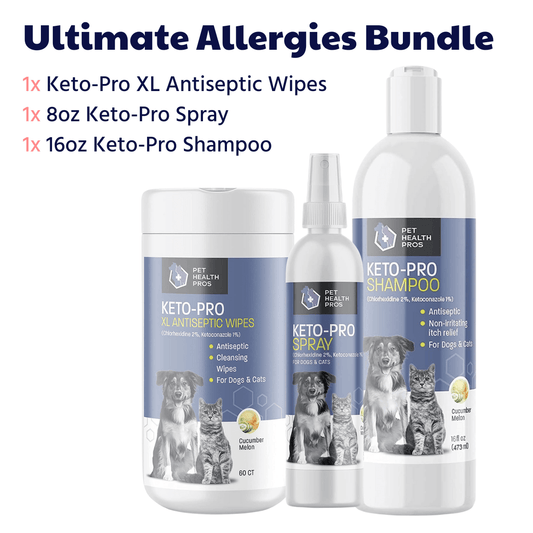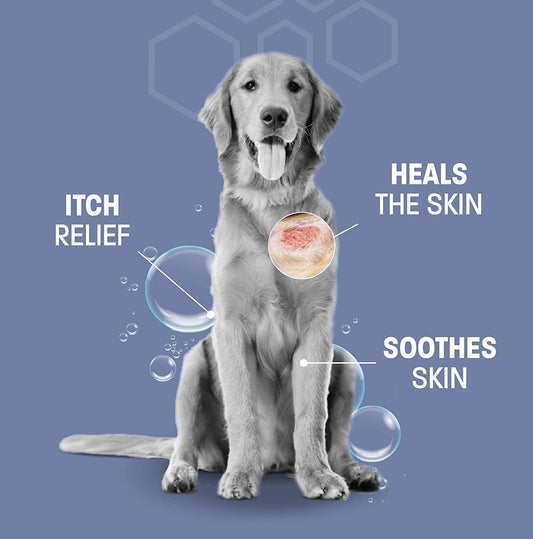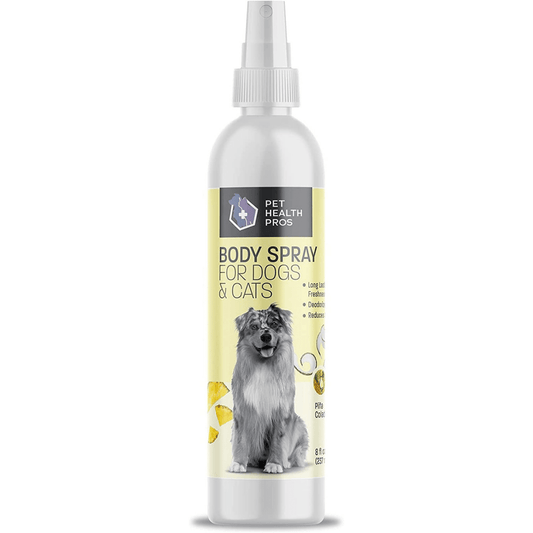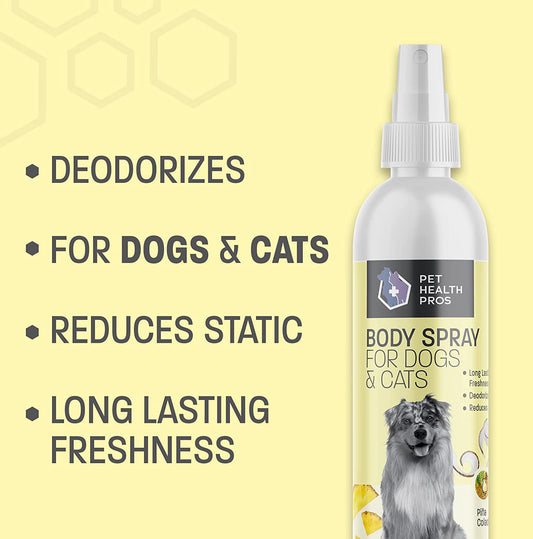If your dog has a habit of chewing on things they shouldn't, creating a DIY anti chew spray can be a great solution. This guide will help you understand why dogs chew, what ingredients to use, and how to make and apply your own spray to keep your furry friend from damaging furniture and other items.
Key Takeaways
- Understanding the reasons behind your dog's chewing can help you address the issue effectively.
- Using safe ingredients is crucial for your dog's health when making a DIY anti chew spray.
- Follow the step-by-step instructions carefully to create an effective spray.
- Regularly apply the spray to areas where your dog tends to chew to reinforce the behavior change.
- Training your dog alongside using the spray can lead to better results in reducing unwanted chewing.
Understanding Why Dogs Chew
Dogs chew for various reasons, and understanding these can help pet owners manage this behavior effectively. Chewing is a natural instinct for dogs, and it can stem from several factors:
Common Reasons for Chewing Behavior
- Boredom: Dogs may chew to entertain themselves when they have nothing else to do.
- Anxiety: Stressful situations can lead dogs to chew as a coping mechanism.
- Teething: Puppies often chew to relieve discomfort from their growing teeth.
The Impact of Chewing on Dog Health
Chewing can have both positive and negative effects on a dog's health. Here are some key points:
- Positive Effects: Chewing can help keep teeth clean and gums healthy.
- Negative Effects: Excessive chewing can lead to dental issues or ingestion of harmful objects.
Identifying Problematic Chewing
To determine if your dog's chewing is problematic, consider the following:
- Frequency: Is your dog chewing excessively?
- Destruction: Are they damaging furniture or other items?
- Health Risks: Are they chewing on dangerous objects?
Understanding the reasons behind your dog's chewing behavior is crucial for effective management. By addressing the root causes, you can help your dog develop healthier habits.
In summary, recognizing why dogs chew can lead to better solutions for both the pet and the owner. By providing appropriate outlets for chewing, such as toys or training, you can help reduce unwanted chewing behavior. Remember, a well-stimulated dog is a happy dog!
Ingredients for DIY Anti Chew Spray
Creating an effective anti chew spray for your dog involves using safe and effective ingredients. Here’s a breakdown of what you need:
Safe Essential Oils for Dogs
When choosing essential oils, it’s crucial to select those that are safe for dogs. Some recommended options include:
- Lavender: Known for its calming properties.
- Peppermint: Acts as a natural deterrent.
- Cedarwood: Helps repel pests and has a pleasant scent.
Household Ingredients to Use
Many household items can be effective in your DIY spray. Consider using:
- Apple cider vinegar: A common ingredient that dogs dislike.
- Lemon juice: Its strong scent can deter chewing.
- Water: Acts as a base for your spray.
Ingredients to Avoid
Not all ingredients are safe for dogs. Avoid using:
- Alcohol: Can be harmful to pets.
- Citrus oils: Some can be toxic to dogs.
- Onion or garlic: These can cause health issues in dogs.
Always ensure that the ingredients you use are safe for your dog. Monitoring your pet's reaction to the spray is essential to ensure their safety and comfort.
By carefully selecting your ingredients, you can create a safe and effective anti chew spray that helps protect your belongings while keeping your dog safe.
Step-by-Step Guide to Making Anti Chew Spray
Gathering Necessary Materials
To create your own anti chew spray, you will need to gather a few simple materials. Here’s what you’ll need:
- A clean spray bottle (preferably 16 oz)
- Measuring cups and spoons
- A funnel (optional, but helpful)
- A mixing bowl or container
Mixing the Ingredients
Mixing the right ingredients is crucial for effectiveness. Here’s a basic recipe to follow:
- Start with 1 cup of water.
- Add 1 cup of apple cider vinegar.
- Include 10-15 drops of a safe essential oil, such as lemon or lavender.
- Stir the mixture well until combined.
- Pour the mixture into the spray bottle using a funnel.
Proper Storage of the Spray
To keep your anti chew spray effective, store it properly:
- Keep it in a cool, dark place to prevent degradation of the ingredients.
- Label the bottle clearly to avoid confusion.
- Shake well before each use to ensure the ingredients are mixed properly.
Remember, consistency is key! Regular application will help reinforce the behavior you want to encourage in your dog.
How to Apply the Anti Chew Spray
Choosing the Right Areas to Spray
When applying your DIY anti chew spray, it’s important to select the right spots. Here are some key areas to consider:
- Furniture: Focus on corners and edges where your dog tends to chew.
- Toys: Spray on toys that your dog frequently chews to deter them from other items.
- Personal Items: Keep your belongings safe by applying the spray on items your dog shows interest in.
Frequency of Application
To ensure effectiveness, apply the spray regularly. Here’s a simple schedule:
- Initial Application: Spray the targeted areas once a day for the first week.
- Ongoing Maintenance: After the first week, reduce to every other day.
- As Needed: If chewing resumes, return to daily applications until the behavior decreases.
Monitoring Your Dog's Reaction
Keep an eye on how your dog responds to the spray. Look for these signs:
- Disinterest: If your dog stops chewing on the sprayed items, it’s working!
- Curiosity: If they sniff but don’t chew, that’s a good sign.
- Negative Reaction: If your dog shows signs of distress, consider adjusting the formula or consulting a vet.
Remember, consistency is key! Regular application and monitoring will help reinforce the behavior you want to encourage.
By following these steps, you can effectively use your anti chew spray to protect your belongings and guide your dog towards better chewing habits. The right application can make all the difference!
Training Tips to Complement Anti Chew Spray
Positive Reinforcement Techniques
Using positive reinforcement is a great way to encourage good behavior in your dog. Here are some effective methods:
- Reward your dog with treats or praise when they chew on appropriate items.
- Use a clicker to mark the moment your dog chooses the right item to chew.
- Be consistent with rewards to help your dog understand what is expected.
Redirecting Chewing Behavior
If your dog starts chewing on something they shouldn’t, redirect their attention. Here’s how:
- Gently take the item away from your dog.
- Offer a suitable chew toy instead.
- Praise them when they start chewing on the toy.
Consistency in Training
Consistency is key in training your dog. Make sure to:
- Set clear rules about what is acceptable to chew.
- Use the same commands and signals every time.
- Involve all family members in the training process to avoid confusion.
Remember, training takes time and patience. Stay positive and keep practicing!
Evaluating the Effectiveness of Your Spray
Signs of Reduced Chewing
To determine if your DIY anti chew spray is working, look for these signs:
- Decreased interest in chewing on furniture or shoes.
- Your dog shows less anxiety or boredom when left alone.
- You notice your dog engaging in more appropriate chewing behaviors, like toys.
Adjusting the Formula if Needed
If you find that your spray isn’t effective, consider these adjustments:
- Change the concentration of the ingredients.
- Try different essential oils that may be more appealing to your dog.
- Ensure the spray is applied consistently in the same areas.
When to Consult a Professional
If your dog continues to chew destructively despite using the spray, it may be time to seek help. Consider consulting a veterinarian or a dog trainer if:
- Chewing is excessive and damaging.
- Your dog shows signs of stress or anxiety.
- You need personalized training strategies to address the behavior.
Remember, patience is key! It may take time for your dog to adjust to the new spray and change their chewing habits.
To see how well your spray is working, try it out on your pet and watch for changes. If you notice improvements, that's a good sign! For more tips and great products, visit our website today!
Conclusion
Creating your own anti-chew spray for dogs is a smart and cost-effective way to protect your belongings while keeping your furry friend safe. By using simple ingredients like vinegar and citrus, you can make a spray that helps deter dogs from chewing on furniture, shoes, and other items. Remember to test the spray on a small area first to ensure it doesn’t damage your belongings. With a little patience and consistency, you can train your dog to avoid chewing on things they shouldn’t. This DIY solution not only saves you money but also gives you peace of mind knowing you’re using safe materials. Enjoy your time with your pet, and happy training!
Frequently Asked Questions
What is anti chew spray for dogs?
Anti chew spray is a special liquid that you can spray on items to stop dogs from chewing them. It usually has a taste that dogs find unpleasant.
Is it safe to use anti chew spray on my dog?
Yes, most anti chew sprays are safe for dogs when used as directed. Just make sure to choose a product that is specifically made for pets.
How long does the effect of the spray last?
The effect can vary, but you may need to reapply the spray every few days or after your dog chews on the area.
Can I make my own anti chew spray?
Absolutely! You can create your own anti chew spray at home using safe ingredients like vinegar and water or certain essential oils.
What should I do if my dog continues to chew despite using the spray?
If your dog keeps chewing, it might be a good idea to train them with positive reinforcement and redirect their chewing to appropriate toys.
Are there any ingredients I should avoid in homemade sprays?
Yes, avoid using any ingredients that are toxic to dogs, like certain essential oils (like tea tree oil) and any chemicals that could harm them.

